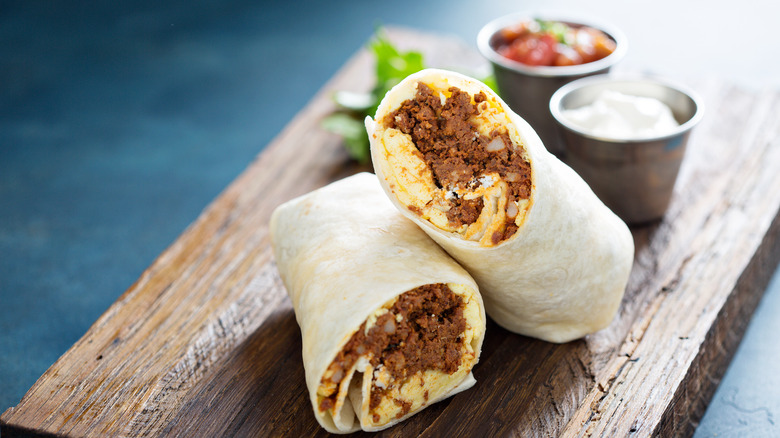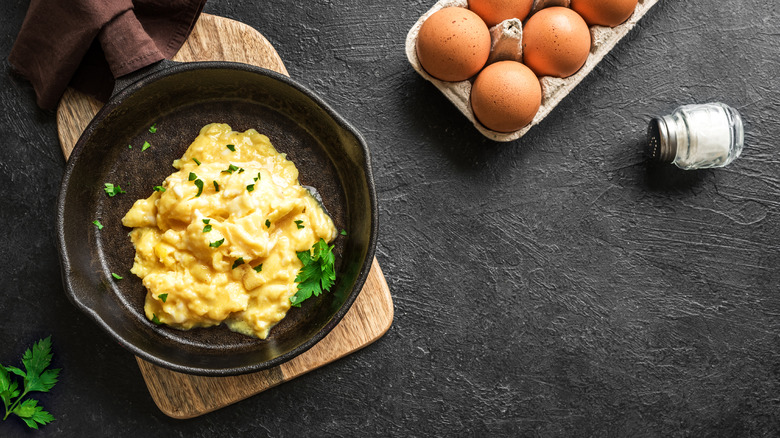The Important Egg Tip You Need For Homemade Frozen Breakfast Burritos
Although the burrito dates back to the Mexican Revolution (via Just Cook), the ever-popular breakfast version didn't appear on restaurant menus until 1975 at Tia Sophia's in Santa Fe, New Mexico, per Taste Atlas. Apparently, a plate of eggs, bacon, and tortillas was an everyday staple in the state, so the restaurant decided to wrap everything together in one on-the-go package.
Moisture, melty cheese, a dash of spice, and an element of brightness are all important for top-notch breakfast burritos, per Serious Eats. And when it comes to assembling the ingredients, the source suggests the "layering" technique. Basically, you start with, say, some scrambled eggs, and lay them in a straight line across the center of the tortilla. Then you'll do the same thing with your veggies, add in a protein like breakfast sausage, then with condiments, cheese, etc., in a stacked formation. Doing so will increase your chances of tasting all of these elements harmoniously.
But all the layering and rolling techniques in the world cannot save poor-quality ingredients and/or improper cooking preparations. This is especially true for eggs, and we've got an important tip that will level up your frozen homemade breakfast burritos.
How to achieve moist eggs after reheating
Trivia question of the day: What happens to eggs when you overcook them? If the word "rubbery" comes to mind, Foodies Family would deem your answer correct. And do breakfast burritos taste good with rubbery eggs in them? Probably not.
You may be cooking your eggs to perfection prior to the burrito-wrapping part, but according to America's Test Kitchen, when you heat up said burrito in a microwave, those eggs can become overcooked. That's because the water molecules within eggs vibrate to create friction, which can create enough heat to take the eggs from soft and moist to dry and rubbery, via Scientific American.
Thus, the solution is clear: undercook the eggs (but not too much) so they're still a bit moist. Then, when you microwave the burrito, those vibrating water molecules will do their job and all that moisture will cook the eggs to the correct doneness. Belly Full suggests aiming for a 4-6 minute timeframe and turning the burrito over at the halfway mark.
For an extra food safety measure, be sure the scrambled eggs are between 144-158 Fahrenheit after microwaving, per Egg Safety. If you'll be cooking the eggs in a different style, check the source's chart for the correct temperature.

